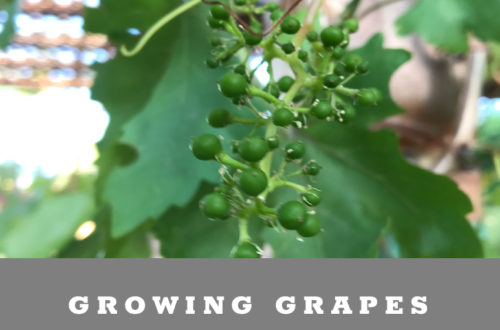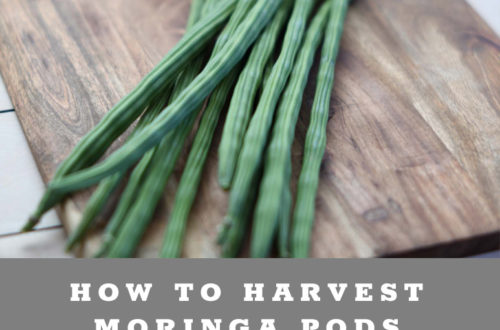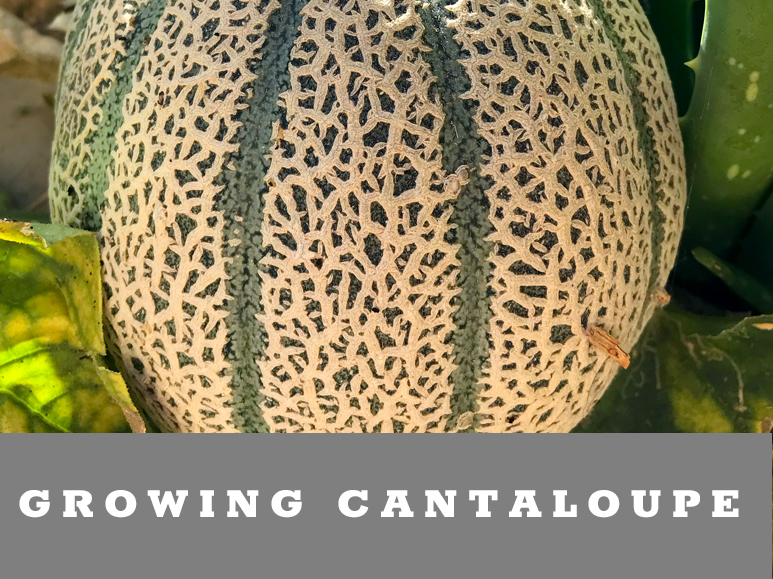
How to grow cantaloupe in your summer garden
Cantaloupe is one of those love it or hate it type fruits. However, when it comes to growing in the summer heat, it is one of the easiest fruits to grow in the low desert of Arizona. Do you want to grow cantaloupe in your summer garden? Follow along and learn how to grow and harvest Cantaloupe.
My posts may contain affiliate links. If you purchase something from one of our links we may earn a small commission, doesn’t cost you any more but helps us to bring you more great tips, recipes and garden ideas. Also, as an Amazon Associate, I earn from qualifying purchases.
Cantaloupe throughout time
The cantaloupe you are used to seeing at the store is actually a muskmelon species (Cucumis melo). Cantaloupe has been around since the 18th century. It was named after Cantaloupo, an Italian city near Rome. However, the fruit seems to have originated in Armenia.
Although they are commonly known these days as Cantaloupe, these fast-growing vining plants are actually a type of reticulated (net-like peel) muskmelon. The flesh inside the fruit has a light orange, slightly juicy interior and contains seeds in the middle of the fruit. (Which can be saved, dried and replanted the following year)
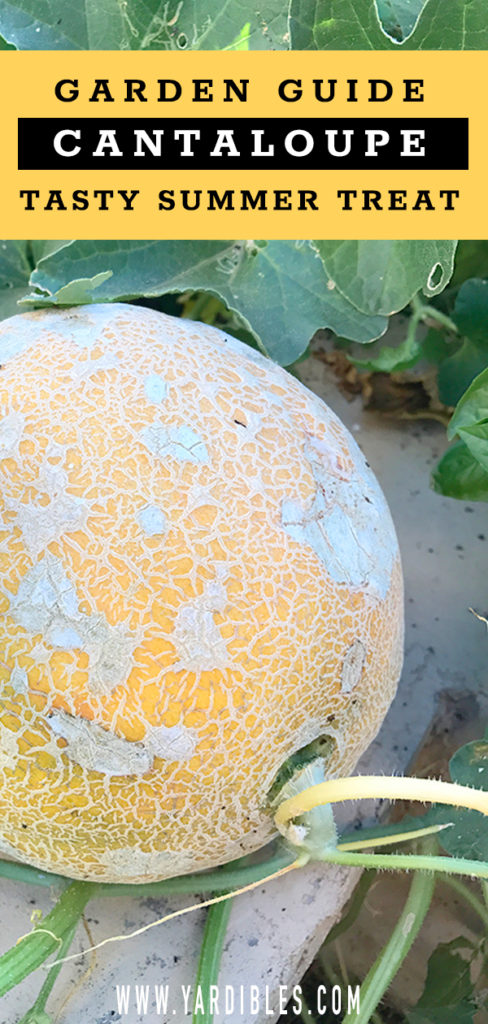
Cantaloupe says bring on the heat!
Cantaloupe can be planted out after the last danger of frost usually around late February/ early March in my neck of the woods. You can place seeds out in the garden all the way through late July for a decent harvest.
Other Easy to Grow Heat Loving Herbs & Vegetables:
Armenian Cucumbers, Luffa, Watermelon, Cantaloupe, Eggplant, Tomatillo, Basil, Rosemary, Longevity Spinach, Malabar Spinach
This best part about this heat-loving fruit is that it lets you know when it is ready to harvest. The flesh under the netted skin turns into a peachy orange color, and the vine releases itself from the fruit.
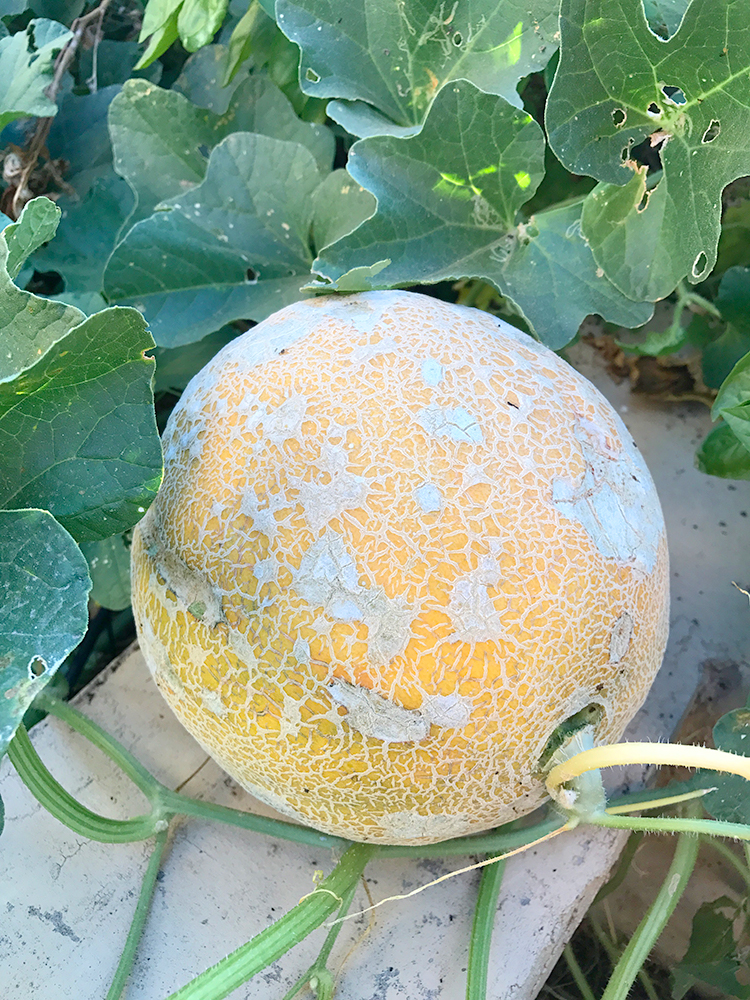
How to Grow Cantaloupe:
Common names:
cantaloupe, rockmelon, sweet melon, or spanspek
Tips & Tricks to Growing Cantaloupe
- It is best to plant them near a trellis or some other structure they can climb. Although the fruit grows up to 11 lbs, they do well when they are able to reach for the sky. It also keeps the fruit off the ground and farther away from pests. This also allows for better air circulation for a healthier overall plant.
- Most vines will support the weight of hanging fruit, but you can provide extra support with cantaloupe hammocks – netting or old T-shirts.
- When planted near a trellis, space plants about 12″ apart or 18″ in the garden.
- When planted in mounds, plant 3-5 seeds per mound and thin to 2-3 plants.
- Make sure they have lots of room! They love to roam. They can grow up to 8ft long and wide.
- Plant when your soil temperatures reach at least 65 degrees
- These can be planted in Phoenix from about February through July.
- Do not plant where you have previously planted cucumbers, melons or squash. (Rotate your crops to decrease pests, diseases & increase nutrients)
Planting Guide
- Amend the soil with organic compost and aged manure
- Plant 1 Cantaloupe Seed approximately 1 inch deep, about 1-2 feet apart
- Thin seeds to 1 every foot once they reach 3-5 inches tall
- Help the vines find the trellis as they grow. They do tend to grip by themselves and rarely need tying up.
- Support heavy fruit with a DIY Fruit Hammock
- Your Cantaloupe will benefit from consistent watering.
- When the Cantaloupe plants start to produce runners, side dress with extra compost or a 21-0-0 fertilizer
- Once they flower, use fish emulsion every 2 to 3 weeks to add some extra nutrients
Cantaloupe is High in Vitamin A!
Cantaloupe is an excellent healthy summer snack, full of antioxidants, electrolytes, and high water content. It is also packed full of Beta carnitine, Vitamin C, and Folate along with other vitamins and minerals..
Cantaloupe is great for helping with dehydration with its high water content (90% water) which in turn helps with heart health. Since these delicious melons grow throughout the summer, you will be able to harvest them over the course of a few weeks. But what to do with so many cantaloupes?
Cantaloupe Recipes:
I have put together some great summer recipes that include this delicious summertime fruit:

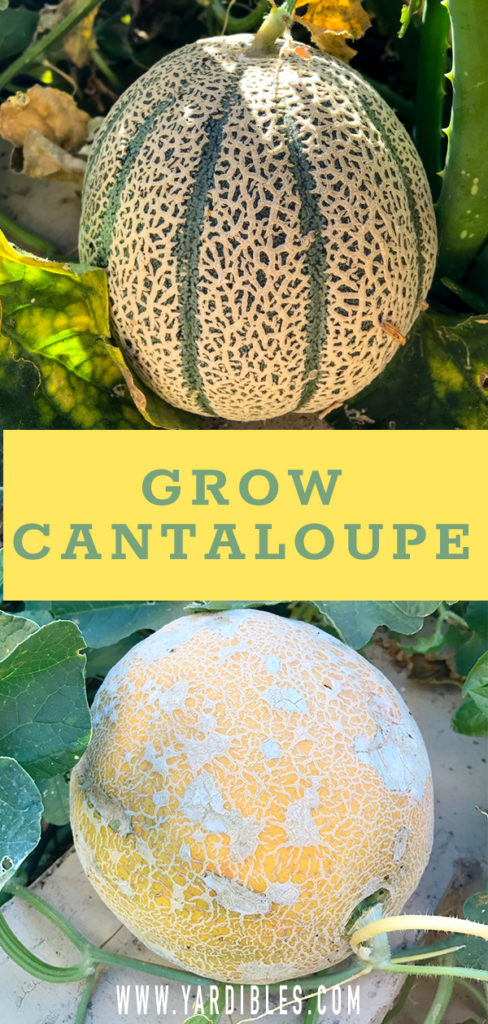 | 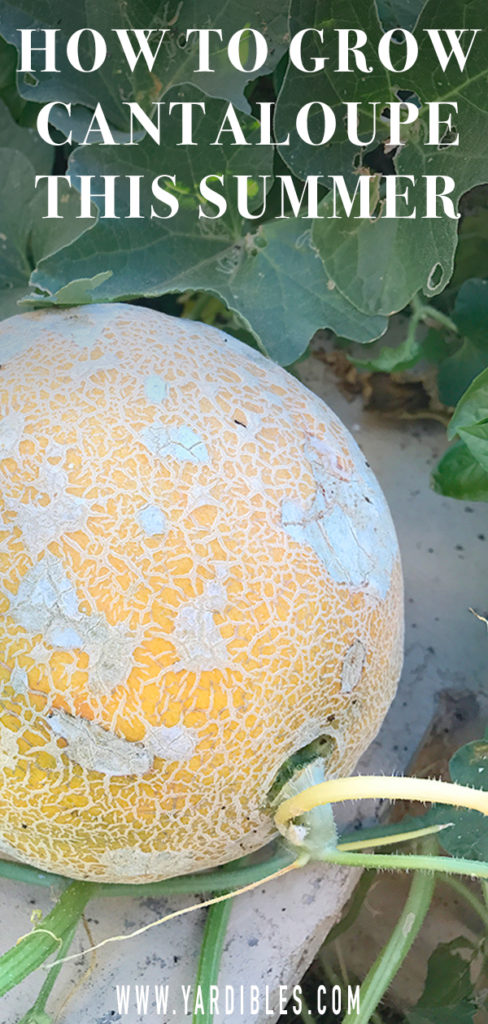 | 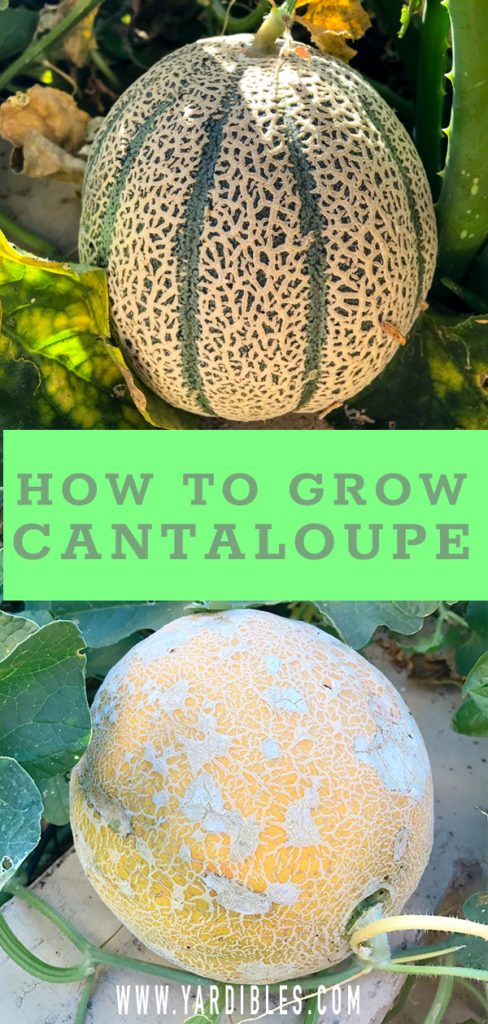 |



